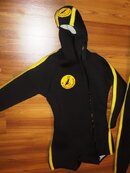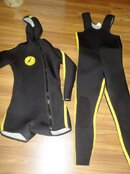If there’s one man who appreciates those trailblazers and their early technology, it’s Andrés Clarós. Over many decades, he has amassed an astonishing collection—“probably the largest in the world,” Andrés reckons—of over 1,000 underwater cameras and housings. With various flashes, accessories, parts, tools, and books, it amounts to more than 4,000 items—and, he stresses, “all of them not digital!”
Andrés’ forays into underwater photography began in 1978. When he wasn’t peering into the ears, noses, and throats of the good people of his community (he’s an ENT doctor), he was out shooting underwater. Though he obtained a few cameras over the years, from 1978 forward, it was not until 2007 that his housings really started to pile up.
The Spanish native may be in possession of a vast hoard, but he’s no common hoarder. Andrés has the refined taste of a serious and studied collector, buying only vintage underwater film cameras and housings. He takes particular care to get the “best ones,” and if possible, in “new box” condition, so that he doesn’t have to spend time repairing them.
Andrés’ oldest authentic camera dates back to 1935, and he is the proud owner of one of only six replicas of the Louis Boutan housing from 1893. Tending towards the rare and historical are his aim when purchasing new pieces, and protecting and maintaining a portion of photographic history is his objective in preserving and restoring so many cameras.
The collector is always keen to find ways to share his pride and joy with fellow enthusiasts, having already put together the world’s first underwater camera exhibition at the Maritime Museum of Barcelona, from October 2014 to April 2015. He is now preparing two new events: a 2016–17 exhibition at the Cinema Museum, Girona, Spain, on the “centenary of the first underwater film in the world and the early evolution of the underwater movies”; and another exhibition on underwater cameras for the Paris International Dive Show (Le Salon de la Plongée) in 2017.
So if you’re considering upgrading your camera, or you find an old housing lying around and you don’t know what to do with it,
contact Andrés(yes, he actually told us to write this), and don’t even think about throwing it away. The consummate “vintage” collector will consider almost anything—just make sure it’s not digital.






